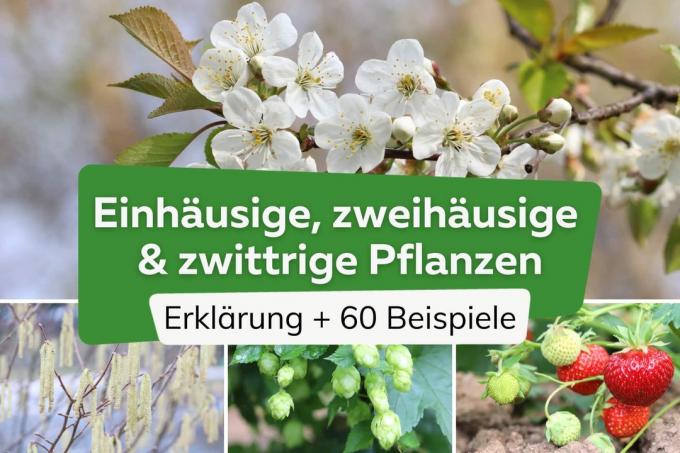
The sex of a plant is referred to by the terms "monoecious", "dioecious" or "hermaphrodite". We'll tell you what's behind these terms. We also present 60 monoecious, dioecious and hermaphrodite plants and give tips for successful pollination.
In a nutshell
- monoecious plants have male and female flowers
- in dioecious plants, either female or male flowers on a plant
- hermaphroditic plants combine male and female sex organs in one flower
- a female and a male plant are always necessary for fruiting in dioecious plants
- hermaphrodite plants fertilize themselves
Table of contents
- monoecious plants
- Dioecious plants
- Hybrid plants
- Successfully fertilize
- frequently asked Questions
monoecious plants
A monoecious seed plant has both female and male flowers. So you are in the same house. Single house is also called monoecy known. The individual flowers are always unisexual. Distinguishing the flowers is relatively easy. Male flowers contain pollen-bearing stamens and female flowers are on
- existing carpels
- a pistil with a stigma to collect pollen
recognizable.
The separating sex flowers do not always appear at the same time. Sometimes they are not on the same branch or twig. The flowers are usually formed with a time delay, only those of one sex appear and later those of the other. This phenomenon of the different maturation period of the male and female sex organs is called dichogamy designated.

Furthermore, there is a spatial separation of the flowers. They are located in different parts of the plant. Male flowers are usually found fairly high up on the plants. Below are some monoecious trees and plants:
- maple (Acer spec.)
- birch (Betula sp.)
- Alder (Alnus spec.)
- Chestnut (Castanea sativa)
- Spruce (Picea spec.)
- cucumbers (Cucumis sativus)
- hornbeam (Carpinus betulus)
- hazelnut (Corylus avellana)
- Evergreen oak (Quercus ilex)
- Pine (Pinus spec.)
- Coconut palm (Cocos nucifera)
- pumpkins (Cucurbita spec.)
- larch (Larix spec.)
- Maize (Zea mays)
- Almond tree (Prunus dulcis)
- Castor bean tree (Ricinus communis)
- walnut (Juglans regia)
- watermelon (Citrullus lanatus)
- Grape vines (Vitis vinifera)
- zucchini (Cucurbita pepo subsp. pepo convar. Giromontiina)
Most conifers are monoecious.
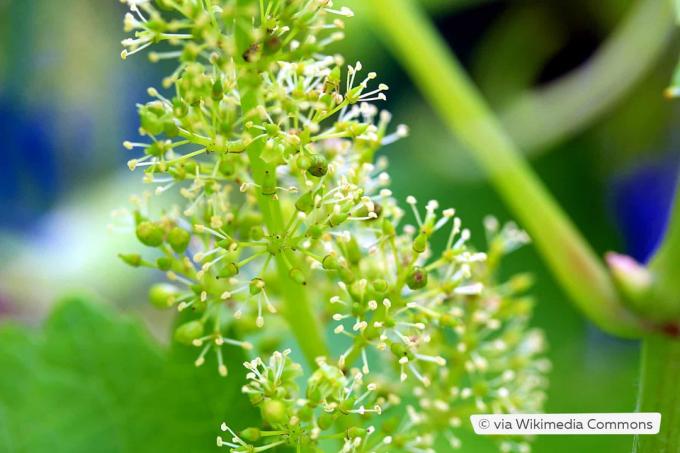
Source: Alwin Michael Schronen, Vine's bloom II, Edited from Plantopedia, CC BY-SA 4.0 Source: Alwin Michael Schronen, Vine's bloom II, Edited from Plantopedia, CC BY-SA 4.0
A notice: Some plants only form male and female flowers at a late age. The pollen for fruit formation then reaches the female flowers from young neighboring plants.
Dioecious plants
Unlike monoecious specimens, a dioecious plant is either only male or female. In other words, the plant only bears pure male or pure female flowers. Dioeciousness is also referred to as dioecy, the sexually different flowers are in two houses, i.e. on two different plants. Overall, only about five percent of all plants are dioecious.
One plant of each sex is always necessary for fruiting. Fruits are formed exclusively on female plants. The male specimens are only responsible for pollen production.
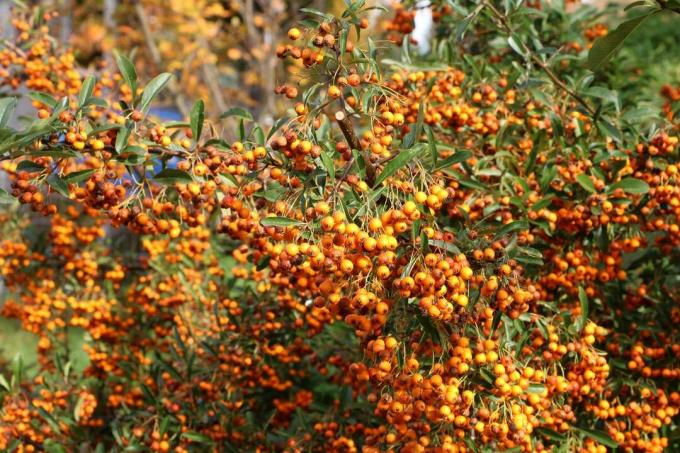
In the case of dioecious plants, self-pollination is impossible. As a result, there is no inbreeding. Since one plant can only be fertilized by another, genetic diversity is guaranteed by mixing the individual genetic information. Examples of dioecious plants are:
- avocado (Persea americana)
- mountain palm (Chamaedorea elegans)
- yew (taxus baccata)
- cinquefoil (Potentilla fruticosa)
- spice bush (Calycanthus floridus)
- ginkgo (Ginkgo biloba)
- dogwood (Cornus spec.)
- Hops (Humulus lupulus)
- kiwi (Actinidia deliciosa)
- laurel tree (Laurus nobilis)
- mulberry (Morus spec.)
- cycad (Cycas revoluta)
- pistachio (Pistachio vera)
- Red Campion (Silene dioica)
- willow (Salix caprea)
- sea buckthorn (Hippophae rhamnoides)
- skimmie (Skimmia japonica)
- asparagus (Asparagus officinalis)
- spinach (Spinacia oleracea)
- holly (Ilex spec.)
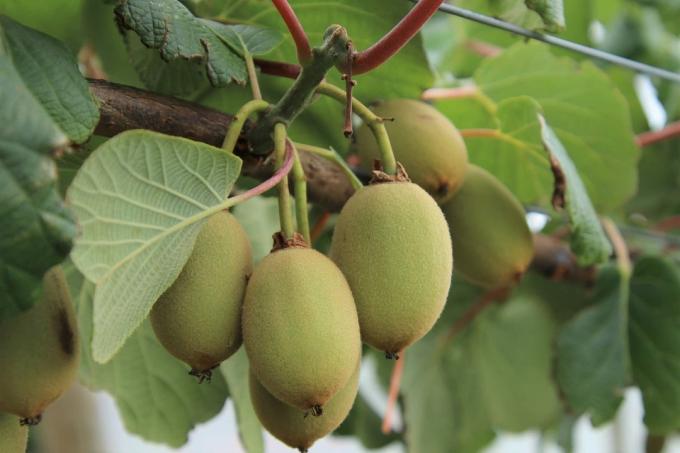
Hybrid plants
The flowers of these plants contain both female and male floral organs. Stamens and carpels are present in a flower at the same time. A distinction is made between self-pollinated and non-self-pollinated hermaphroditic plants. In the case of self-pollination (autogamy), pollination takes place while the flower is closed. Insects can also be pollinated if they move from flower to flower collecting pollen. This is how the pollen gets to the flower stigma. Hermaphrodite plants include, among others
- eggplant (Solanum melongena)
- apple trees (Malus domestica)
- pears (Pyrus communis)
- Beans (Phaseolus vulgaris)
- Peas (Pisum sativum)
- strawberries (fragaria)
- Lamb's lettuce (Valerianella locusta)
- daisy (Bellis perennis)
- blueberry (Vaccinium myrtillus)
- Cabbage plants (Brassica spec.)
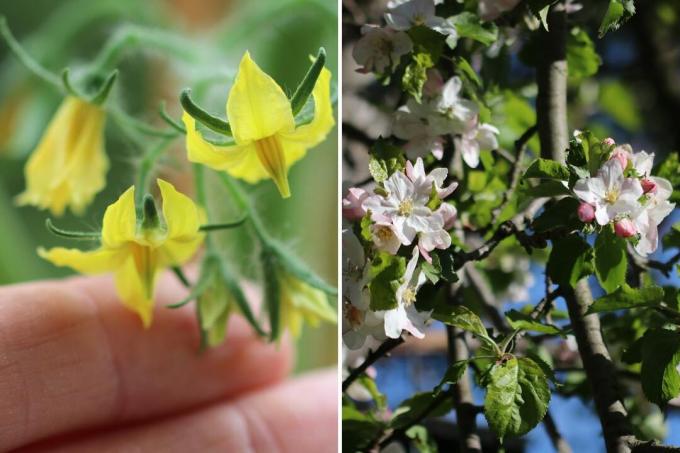
- olive trees (Olea europaea)
- paprika (Capsicum annuum)
- parsnips (Pastinaca sativa)
- Plum trees (Prunus domestica)
- leek (Allium porrum)
- quince trees (Cydonia oblonga)
- roses (pink)
- gooseberry (Ribes uva crispa)
- Sweet cherry (Prunus avium)
- tomatoes (Solanum lycopersicum)
A notice: Around 95 percent of all plants are monoecious and hermaphroditic.
Successfully fertilize
The plants will flower in any case, even if there is no fertilization. Monoecious and hermaphroditic plants are able to fertilize themselves because both male and female reproductive organs are present on one plant.
Dioecious plants, on the other hand, look a little different. In order for fertilization and subsequent fruit formation to occur here, female and male plants must be put together in close proximity. Sometimes a few plants with male flowers are enough to produce pollen to fertilize the female plants.
Cross-pollination also plays a role. This is done by insects, wind and water. Cross-pollination mainly by insects usually promises a higher yield and better-quality fruit.
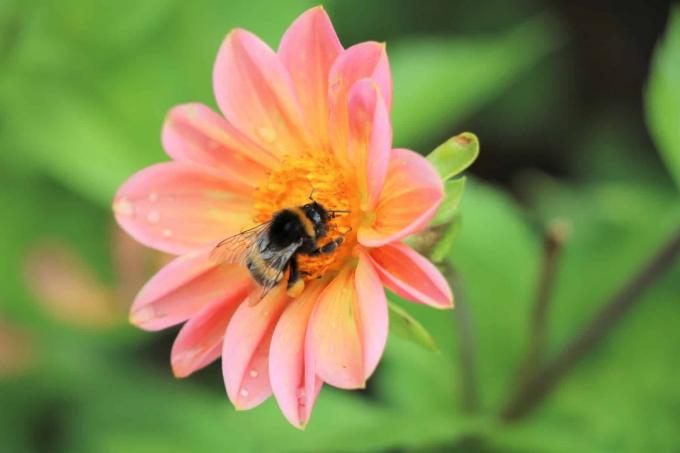
Tip: By creating a flower meadow or setting up an insect hotel, numerous bees, bumblebees and butterflies can be attracted for pollination.
frequently asked Questions
This is sexual reproduction in seed plants. It is a prerequisite for fertilization. The pollen of the male flowers is transported to the stigma of the carpel in female flowers in flowering plants and to the ovules in naked seeds. Pollination can be by insects, wind or humans.
No. During pollination, the pollen lands on the stigma of a flower. Then fertilization takes place. The pollen grains form pollen tubes with male sex cells. These migrate to the pistil of a flower, or rather to the style. From there, the fastest pollen tube reaches the ovary with the female egg cell contained there. Once in the ovule, the pollen tube opens and the cell nuclei of the individual sex cells fuse.
Flowers are made up of different parts: The sepals enclose the flower and provide protection before it opens. The brightly colored petals are the most striking. They attract insects of all kinds. Male flowers and also hermaphrodite flowers contain stamens. Pollen for pollinating the female flowers is present in their anthers. Female flowers have a pistil. From this develops after pollination and fertilization of the seeds.
After fertilization has taken place, all parts of the flower wither. Only the ovary remains. It increases in size over time and develops into a fruit. Its outermost layer becomes the skin of the fruit. Underneath is the pulp and the seeds are embedded in it.



